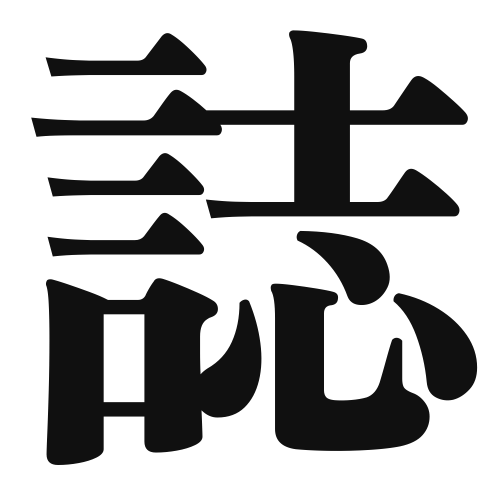1. Overview of Meaning
The kanji “誌” (shi) primarily means “to record” or “to write.” It is often associated with publications such as magazines, journals, and other written materials.
2. Formation and Radicals
Formation of the Kanji: The kanji “誌” is a compound character (会意文字) that combines elements to convey its meaning. It consists of the radical “言” (gen), which relates to speech or writing, and “持” (ji), which means to hold or possess.
Radical: The radical of “誌” is “言” (gen), indicating its connection to language and communication.
3. Examples of Usage
Common Words and Phrases: Some frequently used words that include “誌” are:
- 雑誌 (ざっし, zasshi) – magazine
- 記誌 (きし, kishi) – record or journal
Example Sentences in Daily Conversation:
- この雑誌はとても面白いです。 (このざっしはとてもおもしろいです。) – This magazine is very interesting.
- 彼は毎月新しい記誌を発行しています。 (かれはまいつきあたらしいきしをはっこうしています。) – He publishes a new journal every month.
4. Synonyms and Antonyms
Similar Kanji: A similar kanji is “記” (ki), which means “to record” or “to write down.” The difference lies in that “記” is more focused on the act of recording, while “誌” emphasizes the publication aspect.
Antonyms: An antonym could be “消” (shou), which means “to erase” or “to delete,” representing the opposite action of writing or recording.
5. Cultural and Historical Background
Connection to Japanese Culture: The kanji “誌” is often used in the context of Japanese literature and media, reflecting the importance of written communication in Japanese culture.
Proverbs and Idioms: One common idiom is “誌に載る” (しにのる, shi ni noru), which means “to be published” or “to be featured in a magazine,” highlighting the significance of being recognized in written form.
